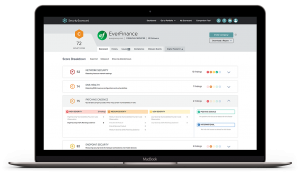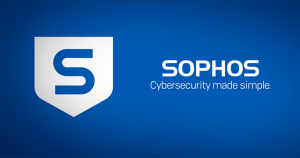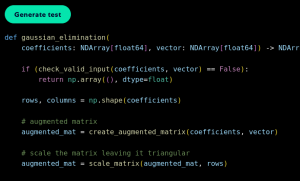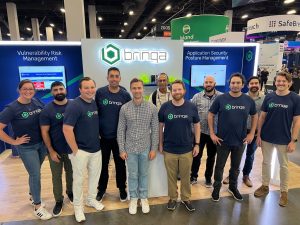Cloud Wars – HP Cloud Strategy – How Dave Donatelli has Changed HP
Last April, Dave Donatelli shocked the storage world by defecting from EMC to join HP. EMC’s savvy lawyers locked him into his non-compete for a year. What a difference a year makes….
At the time of Donatelli’s move, I wrote:
So HP just put a storage person in charge of servers and networking. Finally, HP makes a management move that acknowledges storage spending accounts for half of people’s hardware budgets! But there’s more to this chess match than storage and HP just moved a pawn on the board. The question is what can the Rook now see that it couldn’t before?
It’s becoming more clear. Donatelli wasn’t hired just because he’s a storage guy. There’s a bigger picture that involves building out what folks in the Wikibon community refer to as Infrastructure 2.0. Infrastructure 2.0 is a model that Wikibon believes will dominate computing over the next decade or longer. It provides an integrated and pre-configured environment built on well-tested best-of-breed volume components. It allows higher utilization of resources and flexible real-time addition and subtraction of resources without any significant impact on end-user availability or performance. The Infrastructure 2.0 model allows IT resources to be moved dynamically between physical machines and locations to meet resource balancing and data protection requirements. This movement can be between computing resources managed by an organization (the internal cloud) and computing resources that are managed outside the organization (the external cloud).
The components of the Infrastructure 2.0 stack include the hypervisor, OS, server, network and storage layers, as well as requisite security and management. HP doesn’t own the hypervisor so it has to add value beyond the core of the stack. How does it do that? By integrating compute, server and storage and delivering a management framework that is world-class. And filling white space through acquisitions.
Prior to Donatelli, HP had purchased LeftHand Networks for a few hundred million dollars and PolyServe, a maker of clustered file software. At that point, the company clearly realized that it needed a leader to integrate its core businesses to compete with an Infrastructure 2.0 strategy and Donatelli fit the bill perfectly. Why? Because he has a tremendous track record of execution. The fact that he had a storage background was a huge bonus that gave HP instant credibility in a space where its leadership was defined more by its size and less by its execution prowess. It’s moves in networking have made HP an instant credible #2 to Cisco. Combine that with HP’s server reputation and viola– a new face of HP.
Since bringing on Donatelli, HP has acquired 3Com, Ibrix (file-based services) and is now in a dogfight with Dell to acquire 3PAR. My bet is HP will win this battle but it’s not a lock. Dell could drive up the price so high that HP’s internal IRR model falls down. But in my view, HP needs 3PAR more than Dell does because it can aim 3PAR’s technology at its own aging EVA base and grow that business significantly. Dell on the other hand is looking at a pure greenfield opportunity with 3PAR and could repeat the success it has had with its acquisition of EqualLogic – which is now zeroing in on $1B in annual revenue. As well, I wouldn’t totally rule out another suitor. While it’s a longshot – 3PAR has successfully positioned itself as a cloud infrastructure arms dealer.
Cloud Service Providers and Big IT are Different
What makes this so interesting to me is that everyone talks like carrier class service providers and big IT are the same. They’re not. Cloud service providers are operationally superior to most large IT shops. They monetize their infrastructure, hone it for multi-tenancy, support very precise chargebacks and are in the business of selling IT services. Big IT, while increasingly desirous of such a model, most large shops typically don’t come close to the cloud leaders in terms of scale, agility, service responsiveness and operational excellence. While they may do infrastructure better (sometimes), operationally the cloud guys are self-service transaction driven – that doesn’t describe most IT.
Enter 3PAR. 3PAR was built to cater to carrier-class service providers and I believe HP sees this segment of the market as a major channel opportunity. HP’s channel is well-regarded and the cloud piece is a huge opportunity to disrupt Cisco in networking, EMC in storage and IBM in servers. These competitors aren’t sitting still by any means but 3PAR as an asset to either Dell or HP gives it another arrow in the quiver to compete for this important market segment.
The New Face of HP
Inside of 16 months, it’s becoming clear that HP is completely changing its infrastructure business. It has brought in talent from startups like Ibrix and EqualLogic, networking experts from the 3Com acquisition and attracted former leaders from EMC and NetApp. Trust me…Donatelli’s signature is all over this transformation. It’s wasn’t Hurd, it wasn’t Livermore – it was Donatelli. He has the vision and the industry contacts to execute on the vision. It’s like Gartner’s famous magic quadrant formula– Vision + Execution = Winner.
Don’t get me wrong – there are serious challenges for HP. The organization is still way to slow to respond to market opportunities, it’s still too bureaucratic, it doesn’t get enough out of HP Labs, it has white space in storage and networking…but it’s filling the holes very fast. Hurd’s departure, unlike Ellison’s rant suggested, is perhaps exactly what HP needs right now. My guess is Ellison was angry not only at the treatment of his ‘friend’ Mark Hurd but at the fact that a new leader with vision, execution prowess and financial discipline (hmmm – like Donatelli) is a bigger threat to Oracle than the same old cost-cutting HP.
Watch this space folks. EMC’s ownership of VMware has put it in the catbird seat and companies like HP and Dell know that to compete they must add value beyond the hypervisor. As well, Oracle is this huge looming wildcard. Increasingly, these titans will compete with VMware for the white space in the data center stack, they will fight like dogs over cloud service providers and use their balance sheets as weapons in the battle.
What a great lead up to VMworld 2010. We have a zillion executives, CIOs, practitioners, cloud service providers, analysts and bloggers on Live TV and we’ll be exploring the fireworks. Please join in the discussion on Twitter, email and the like – we’d love to hear your thought and opinions.
A message from John Furrier, co-founder of SiliconANGLE:
Your vote of support is important to us and it helps us keep the content FREE.
One click below supports our mission to provide free, deep, and relevant content.
Join our community on YouTube
Join the community that includes more than 15,000 #CubeAlumni experts, including Amazon.com CEO Andy Jassy, Dell Technologies founder and CEO Michael Dell, Intel CEO Pat Gelsinger, and many more luminaries and experts.
THANK YOU









